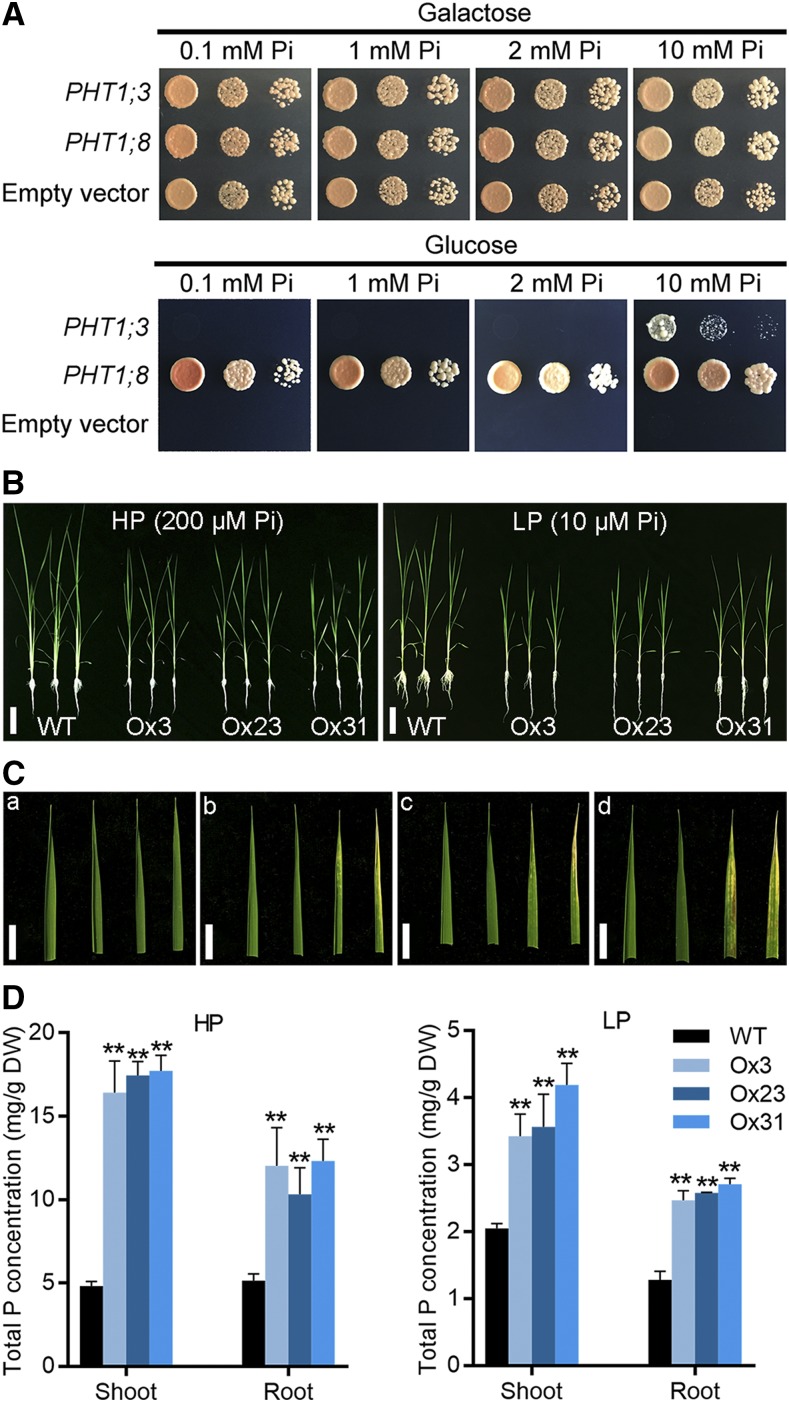Figure 3.
Evaluation of the Pi transport activity of PHT1;3 in a yeast mutant and in plants. A, Complementation of a yeast mutant EY917 (Δpho84Δpho87Δpho89 Δpho90Δpho91) defective in Pi uptake by PHT1;3. Yeast cells harboring either an empty expression vector (negative control) or PHT1;8 cDNA construct (positive control) and PHT1;3 cDNA construct were grown in synthetic dropout (−Trp/−Ura) medium containing 100 mm Gal to an OD600 of 1. Five-microliter aliquots of 10-fold serial gradient dilutions were spotted on agar plates containing different Pi concentration, respectively. Plates were incubated at 30°C for 4 d. B, Phenotyping of wild-type plants and PHT1;3 overexpression transgenic plants grown under HP (200 μm Pi) or LP (10 μm Pi) conditions. Scale bars = 10 cm. C, Four mature leaf blades of the wild type (a) and three independent PHT1;3 overexpression lines (b–d) under HP conditions. Necrosis of old leaf blade tips was observed in PHT1;3 overexpression lines (b–d). Scale bars = 1 cm. D, Total P concentration in shoots and roots of PHT1;3 overexpression and wild-type plants. Four-leaf-old seedlings were grown in nutrient solution supplied with HP (200 μm Pi) or LP (10 μm Pi) until the seventh leaf blades were fully expanded. Pi concentration was measured in the plants grown under HP (left) or LP (right) conditions. Values represent means ± sd of biological replicates (n = 5). Data significantly different from that in the corresponding controls are indicated (**P < 0.01, Student’s t test). DW, dry weight.

